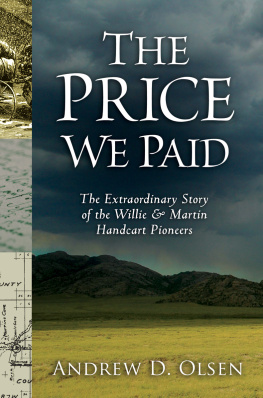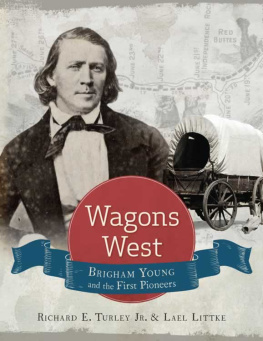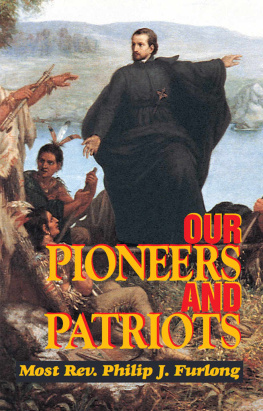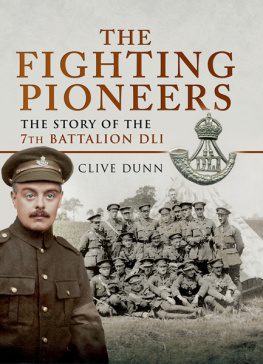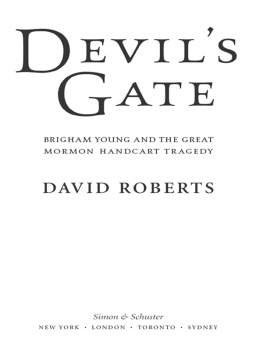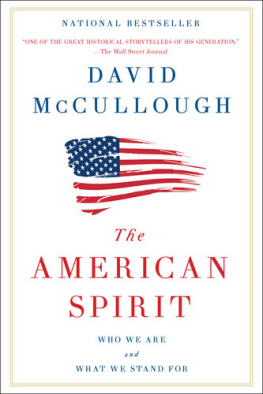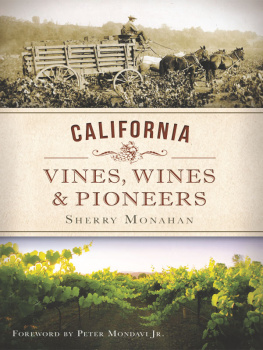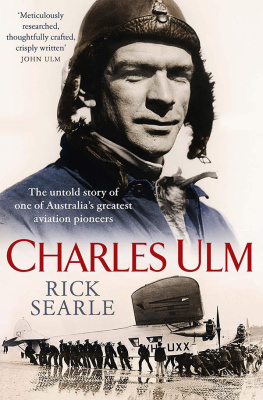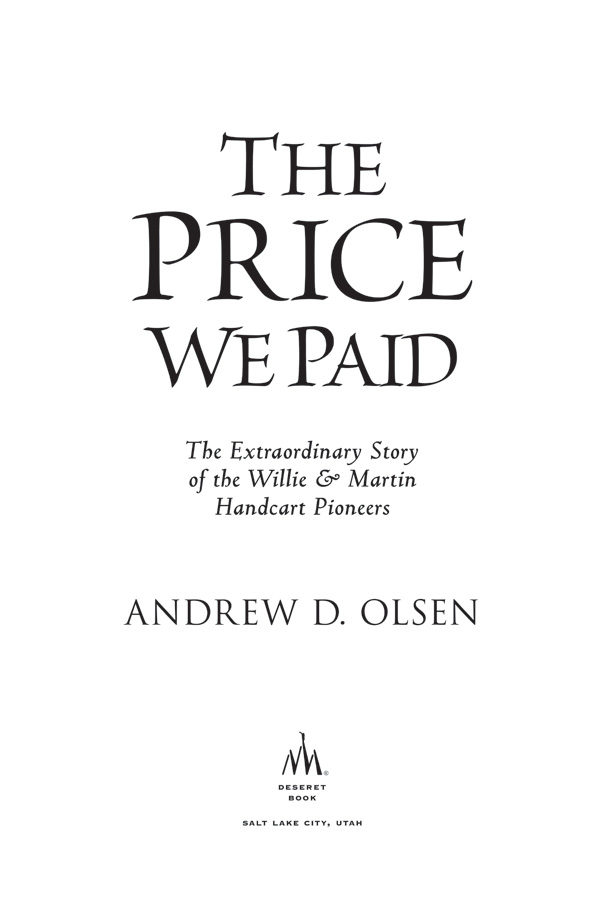2006 Andrew D. Olsen.
All rights reserved. No part of this book may be reproduced in any form or by any means without permission in writing from the publisher, Deseret Book Company, P.O. Box 30178, Salt Lake City Utah 30178. This work is not an official publication of The Church of Jesus Christ of Latter-day Saints. The views expressed herein are the responsibility of the author and do not necessarily represent the position of the Church or of Deseret Book. Deseret Book is a registered trademark of Deseret Book Company.
Preface
This book had its beginning in my first visits to Rock Creek Hollow and Martin's Cove. These are places made sacred by the sacrifices of the Willie and Martin handcart pioneers. I have known the stories of these pioneers for most of my life. But when I visited these places, I realized that I knew them in only a vague, distant way. Almost immediately I felt a compelling need to know them better.
In researching these stories, I found them to be even more tragic than I had known before. But for me the most profound discovery, shining through all the heartbreak and misery, is their boundless capacity to instruct and inspire. This power is comparable to the stories in the scriptures. The intent of this book is to contribute to a greater understanding of the Willie and Martin handcart stories. My hope is that as they become better known, their power to teach and bless will continue to increase.
Many of the misunderstandings about these handcart companies come from the traditional combining of their accounts. Although the groups were similar in some ways, they were usually about 100 miles apart, and their experiences differed significantly. Toward the end of the trek, for example, the Willie company stretched so far ahead that they were entering the Salt Lake Valley on the same day the Martin company was leaving Martin's Cove, 325 miles away.
In an effort to tell these stories as clearly as possible, this book has separate sections for the Willie and Martin companies. Each section provides brief updates on the other company at key points. The Willie section also includes background information that applies to both handcart companies, covering subjects such as the gathering, the origin of the handcart plan, and the beginning of the rescue. The Martin section includes information about the Hodgetts and Hunt wagon companies, which traveled closely with the Martin handcart company and shared in their experiences. Both sections tell of the rescue, which differed considerably for the two groups.
Woven into the overall stories of these handcart companies are stories of the peoplethe emigrants, their leaders, and their rescuers. Before this study, I knew very few of them by name and knew even less about their lives before and after the handcart experience. In a day when conviction often concedes to convenience, when sacrifice often concedes to self-indulgence, I have found that there is much to learn from these people.
I have learned not only from their faithfulness but also from their imperfections. Along with stories of people helping those who fell behind are stories of people who did not receive the help they needed. Providing a counterpoint to those who shared their scanty rations are those who gave in to their desperate hunger and pilfered. Even many of those who later expressed gratitude for their trials sometimes felt doubt and despair. To see these people doubt and then rally their faith, to see them err and then make amends, to see them triumph despite their weaknesses is an important source of the power in these stories.
Most accounts of the Willie and Martin pioneers end with the rescuers leading them into the Salt Lake Valley, but the stories do not really end there. What were the lives of these people like after the handcart ordeal? What were the long-term effects of the experience? This book addresses these questions for many members of each company. This part of the story is as instructive and inspiring as anything that happened during the handcart trek.
Source Notes
The research for this book draws heavily on the journals kept by members of the Willie and Martin handcart companies, the Hodgetts and Hunt wagon companies, and the rescuers. On their own, however, these journals have some limitations. Not many exist, most of the entries are brief, and few of them continue after the October storms began. To supplement the journals, I have used recollections and reminiscences. Because some of these were written more than 50 years later, they often contain inaccuracies about such facts as places, dates, and names. Nevertheless, these sources are valuable in providing personal feelings and insights.
When quoting unpublished sources, I have occasionally made minor spelling, grammar, and punctuation changes so the accounts read more clearly. When encountering differences in spellings and dates, I have used what seemed to be the most credible source for such information.
As with any historical study, some interpretation of the sources has been necessary in assembling these accounts. If there are errors in the interpretation or analysis, I bear responsibility for them. If readers have information that would correct errors or provide additional insights, I welcome it. The following e-mail address is available for providing such information or any other feedback: handcarts@hotmail.com.
Acknowledgments
I am grateful for the support of my wife, Linda, during this project. She has encouraged me even as I have used evenings, weekends, and vacations to research and writeand even as the completion date kept extending for months. She has also shared valuable insights and suggestions while reading the manuscript. Many times I have felt her prayers answered on behalf of this project. Some of her ancestors were in the Martin company, and one of them, George Barnes, died on the journey, most likely at Martin's Cove.
Our children, Jessie, Eric, and Scott, have also given support and encouragement. As we have knelt together at night, they have prayed for me to receive help. They constantly inquire about my progress. And they never seem to tire of handcart stories for family home evening.
I am also grateful to my parents, Richard and Alma Olsen, for their counsel and encouragement. Throughout her life, my mom has demonstrated the same faith and sacrifice that the handcart pioneers did. My dad has also been a spiritual guidepost. At one point during this project I asked if he would give me a father's blessing the next time we were together. Rather than waiting for what I expected would be a month, the next Sunday afternoon he and my brother Ryan drove from Idaho in a snowstorm so he could give me the blessing. It has been a constant source of strength.
I would not have started this book, much less finished it, without the help of my friend Rob Perry. He encouraged me to put the first words on paper. He read the manuscript at least twice and commented extensively. His questions and insights have influenced many of the chapters. Almost everyone who knows Rob has felt his rescuing embrace. I have especially felt it whenever I needed help during this project. One of the Martin company's rescuers, Arza Hinckley, is Rob's kinsman. Rob Perry is no less a rescuer.
I am grateful to many others who have provided essential help. Robert Scott Lorimer, former president of the Riverton Wyoming Stake, and his wife, Desiree, have been generous in their assistance. Jolene S. Allphin, author of Tell My Story, Too, has likewise been generous in reading and critiquing the manuscript and sharing information. Gordon and Margaret Nebeker have also provided important assistance in reviewing the manuscript. Cory Maxwell and Suzanne Brady of Deseret Book have been especially helpful in guiding the preparation of the manuscript and refining the final product. I also appreciate the assistance of Don H. Smith and Stewart Glazier, who readily responded to many questions, and William Slaughter for help with most of the photographs and illustrations. I am also grateful to Julie Rogers for permission to use her painting of rescuer Joseph Young riding into the Martin company's camp.

